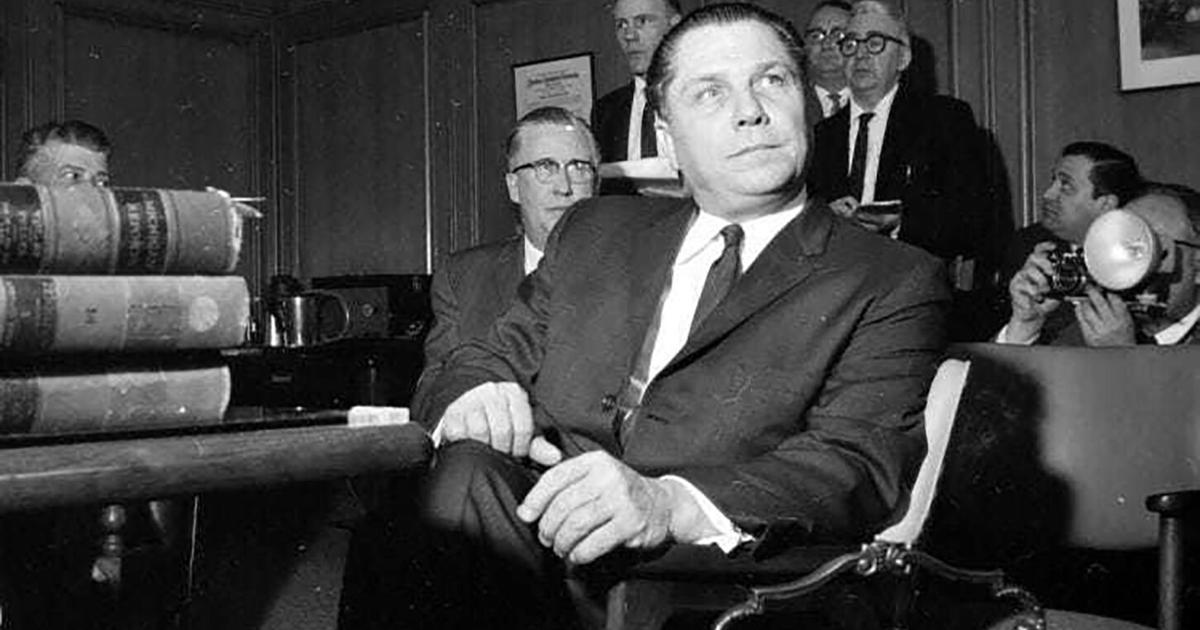Fifty years after his enigmatic vanishing act, the legacy of Jimmy Hoffa continues to cast a long, complex shadow over American organized labor. On July 30, 1975, the powerful Teamsters union leader disappeared under mysterious circumstances linked to the criminal underworld, a puzzle that has captivated the public imagination for decades and remains one of the nation’s most enduring true crime sagas.
Hoffa’s rise to prominence as president of the International Brotherhood of Teamsters from 1959 to 1971 coincided with the heyday of American unions during the postwar economic boom. He became an undeniable symbol of working-class labor leadership, celebrated for his relentless advocacy for members and his instrumental role in negotiating landmark collective bargaining agreements throughout the 1960s, which significantly elevated living standards for countless workers.
However, Hoffa’s methods were often as controversial as they were effective, leading to a deeply divisive public perception. His leadership style, characterized by a willingness to employ “heavy-handed” tactics and engage with unsavory elements, ultimately led to federal convictions, including jury tampering in 1964. This entanglement with the law contributed to negative stereotypes of union bosses and is widely believed to have precipitated his violent end, highlighting the profound moral ambiguities within the organized labor movement of that era.
The circumstances surrounding his disappearance on that fateful afternoon in Bloomfield Township, Michigan, after a scheduled meeting with two alleged Mafia figures, have spawned countless theories and investigations. Despite extensive efforts by federal authorities, including ongoing searches years after the event, the exact location of his remains and the full story of what transpired remain shrouded in secrecy, fueling a persistent public fascination with the mystery.
Beyond the personal intrigue, Hoffa’s political machinations were equally impactful. His complex relationship with the Republican establishment, notably the commutation of his sentence by President Richard Nixon, underscored his pragmatic approach to power, transcending traditional partisan divides. Labor experts have even drawn parallels between Hoffa’s brash candor and his ability to cultivate passionate loyalty among his base to the style of more contemporary figures, illustrating a recurring archetype in American political influence.
Ironically, Hoffa’s controversial actions inadvertently catalyzed significant reforms within labor law. His preferred strong-arm tactics, such as secondary boycotts and hot cargo clauses, were explicitly outlawed by the 1959 Landrum-Griffin Act. This pivotal legislation also introduced requirements for secret ballots in union elections, enhanced reporting to the federal government, and mandated that union leaders act as fiduciaries, fundamentally reshaping the legal and ethical landscape for union politics.
The era dominated by figures like Hoffa contrasts sharply with the contemporary challenges faced by organized labor. Union membership in the United States has seen a marked decline since its peak in the late 1970s, attributed to a confluence of factors including aggressive anti-union policies, economic shifts away from manufacturing, and the rise of globalized trade. This decline underscores the difficult environment in which today’s unions operate, far removed from the formidable power Hoffa once wielded.
Nevertheless, Hoffa’s tumultuous career offers enduring lessons for the modern union movement. His unwavering focus on securing tangible benefits for his members and his insistence on a professional demeanor for union representatives continue to resonate. His legacy serves as a potent reminder of the importance of unity and strength in the face of adversity, a message that remains profoundly relevant for workers navigating today’s complex economic and political landscape.






Leave a Reply